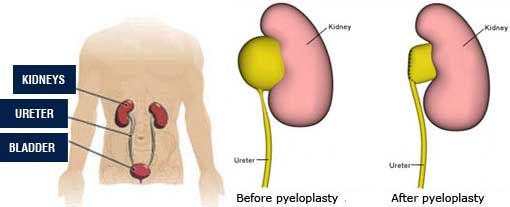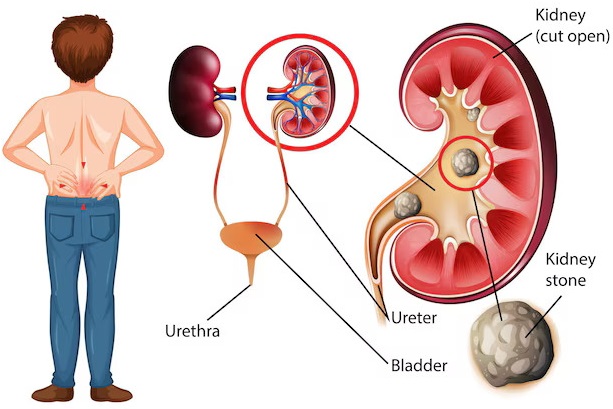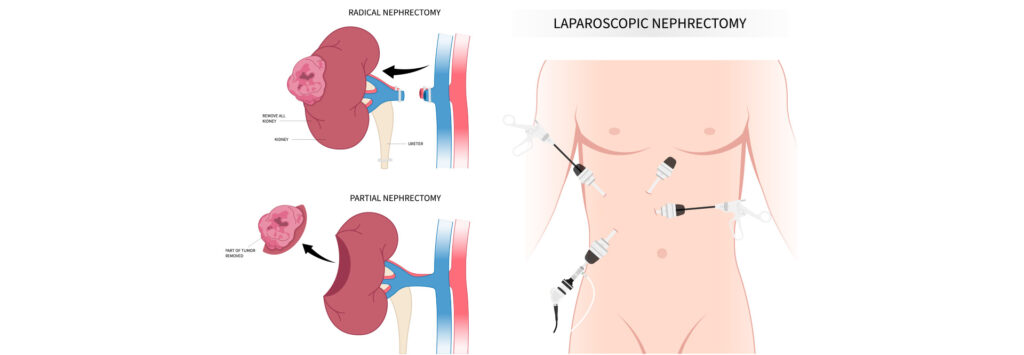Pyeloplasty is needed when there is a blockage or narrowing at the junction where the kidney meets the ureter, called the ureteropelvic junction (UPJ). This condition is known as UPJ obstruction. It prevents normal urine flow from the kidney to the bladder and can cause swelling of the kidney (hydronephrosis).
You may need a pyeloplasty if you have symptoms like:
Flank or back pain
Recurrent urinary tract infections
Kidney stones
Blood in the urine
Decreased kidney function
It’s usually done to relieve the blockage, preserve kidney function, and prevent further damage.
1: Anesthesia
You are given general anesthesia to make you sleep and feel no pain during the operation.
2: Making Incisions
The surgeon makes either:
A large incision (open surgery), or
Several small incisions (laparoscopic or robotic surgery) on the side of your abdomen.
3: Finding the Problem
The surgeon carefully finds the blocked or narrowed part at the ureteropelvic junction (UPJ).
4: Removing the Blockage
The damaged or scarred part of the ureter causing the blockage is cut out and removed.
5: Reconnecting the Ureter
The healthy ureter is then stitched (sutured) back to the kidney’s renal pelvis in a way that widens the passage for urine to flow easily.
6: Inserting a Stent
A small internal stent (tube) is placed inside the ureter to keep it open and help it heal properly.
7: Closing the Incisions
The incisions are closed with stitches or surgical glue.
8: Recovery
You are moved to the recovery room and monitored as you wake up.
The stent usually stays in place for 4 to 6 weeks, then is removed with a simple procedure later.
There are mainly three types of pyeloplasty:
Open pyeloplasty (traditional way, bigger cut)
Laparoscopic pyeloplasty (small cuts, quicker recovery)
Robotic-assisted pyeloplasty (done using robotic arms for more precision)
Recovery usually takes a few weeks, and success rates are very high! 🌟
Benefits of pyeloplasty surgery:
Restores Normal Urine Flow
Removes the blockage at the ureteropelvic junction (UPJ), allowing urine to drain freely from the kidney to the bladder.
Relieves Pain
Reduces or eliminates flank, back, or abdominal pain caused by the obstruction.
Protects Kidney Function
Prevents long-term kidney damage, hydronephrosis (kidney swelling), and loss of kidney function.
Decreases Risk of Infections
Reduces the chances of repeated urinary tract infections (UTIs) caused by stagnant urine.
Lowers the Risk of Kidney Stones
Proper urine drainage helps prevent the formation of kidney stones.
High Success Rate
Pyeloplasty has a very high success rate (over 90%) with long-lasting results.
Minimally Invasive Options Available
Laparoscopic and robotic pyeloplasty offer faster recovery, less pain, and smaller scars compared to open surgery.











